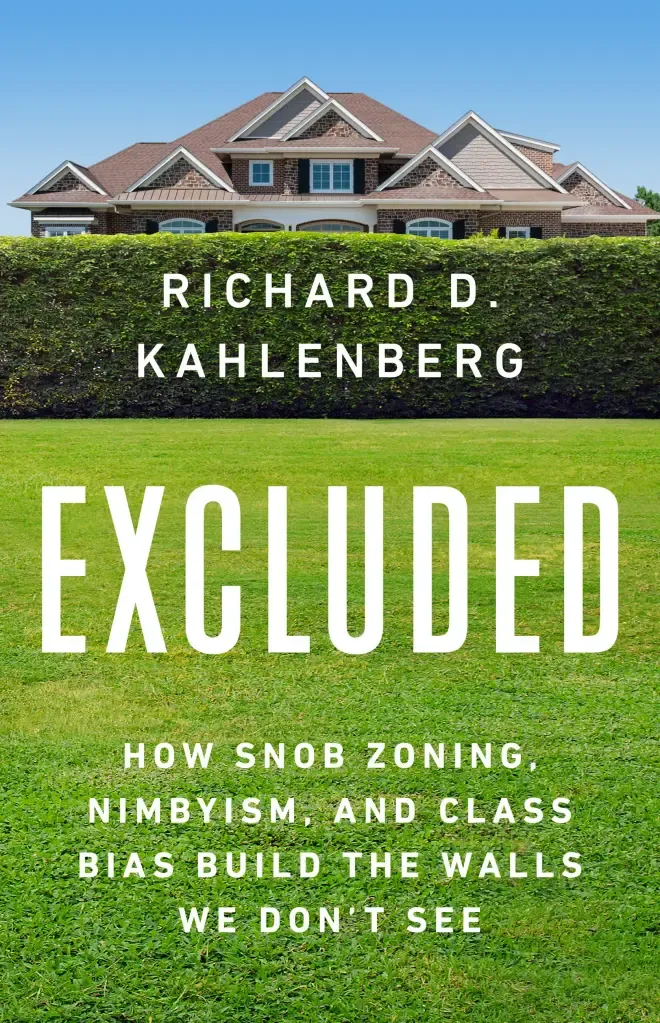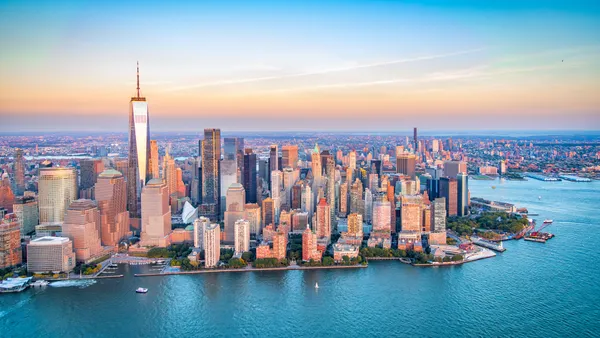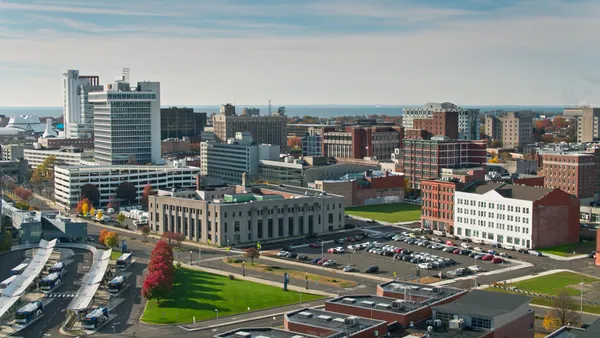The United States has a zoning problem, says Richard D. Kahlenberg, author of the new book “Excluded: How Snob Zoning, NIMBYism, and Class Bias Build the Walls We Don’t See.”
U.S. residents have traditionally moved to opportunity, but the system is broken such that the places with the best jobs also have prohibitively exorbitant housing costs, Kalhlenberg told Smart Cities Dive in a recent interview.

Kahlenberg blames exclusionary zoning policies “that prevent housing where people want it. The worst cases are on the West Coast, California up to Washington, and on the East Coast, D.C. to Boston,” he said. “These are highly productive areas with strong jobs, but zoning policies artificially limit the supply of housing.”
The book lays out the problem starkly: In most U.S. cities, zoning laws bar multifamily units on three-quarters of the land. Minimum lot sizes for single-family homes can drive up prices even further. In Connecticut, 81% of residential land requires one-acre lots.
“Snob zoning blocks opportunity,” Kahlenberg writes in his book. This type of zoning is also rooted in racism, he said. Racially restrictive housing covenants became illegal with passage of the Fair Housing Act in 1968, but other restrictive housing covenants replaced them and later were codified by zoning laws. Those zoning laws mean that today, suburbs are more likely to be racially integrated but are still segregated by class.
Exclusionary zoning is more prevalent in coastal blue states, Kahlenberg said. “As Democrats have come to rely increasingly on well-educated elites, there’s more class prejudice,” he said. “They look down on people who are less educated.”
NIMBYism is another factor driving exclusionary zoning, he said. Since the high inflation of the 1970s, “the single-family home is the biggest asset for most Americans,” Kahlenberg said. “So they go nuts if they think their property values are going to be threatened,” such as by more development, denser development, or housing for lower-income households nearby. Yet “there’s very little evidence that the presence of those who are less fortunate has a big impact on property values, so long as the public housing units are modest of scale and tastefully constructed.”
Exclusionary zoning policies are not immutable, however, Kahlenberg said. “The single-family home is a core part of the American dream,” he said. “Single-family exclusive zoning is much less popular. In the past five years, single-family exclusive zoning has been ended [in some places] and multifamily housing has been legalized, as more and more people recognized that bans on duplexes and apartment buildings are driving up prices. They’re angry, the price is too high. Some politicians are taking notice.”
Observers were stunned when, after a protracted struggle, Minneapolis in 2018 became the first major city to ban single-family exclusive zoning citywide. Similar bans have since passed at the state level in Oregon and California and in Charlotte, North Carolina.
Kahlenberg advocates for a federal “Economic Fair Housing Act” to make it illegal for zoning to discriminate on the basis of income. As with the Fair Housing Act, such a law would allow citizens who feel they had been the victims of such discrimination to sue the government.
Passing such a law may seem impossible in the current political environment, but “we’ve seen it happen in states,” Kahlenberg said. “Reforms to zoning laws on state levels would not have happened without Republican legislators who represent White working-class areas aligning themselves with urban lawmakers who represent Blacks and Hispanics.”












